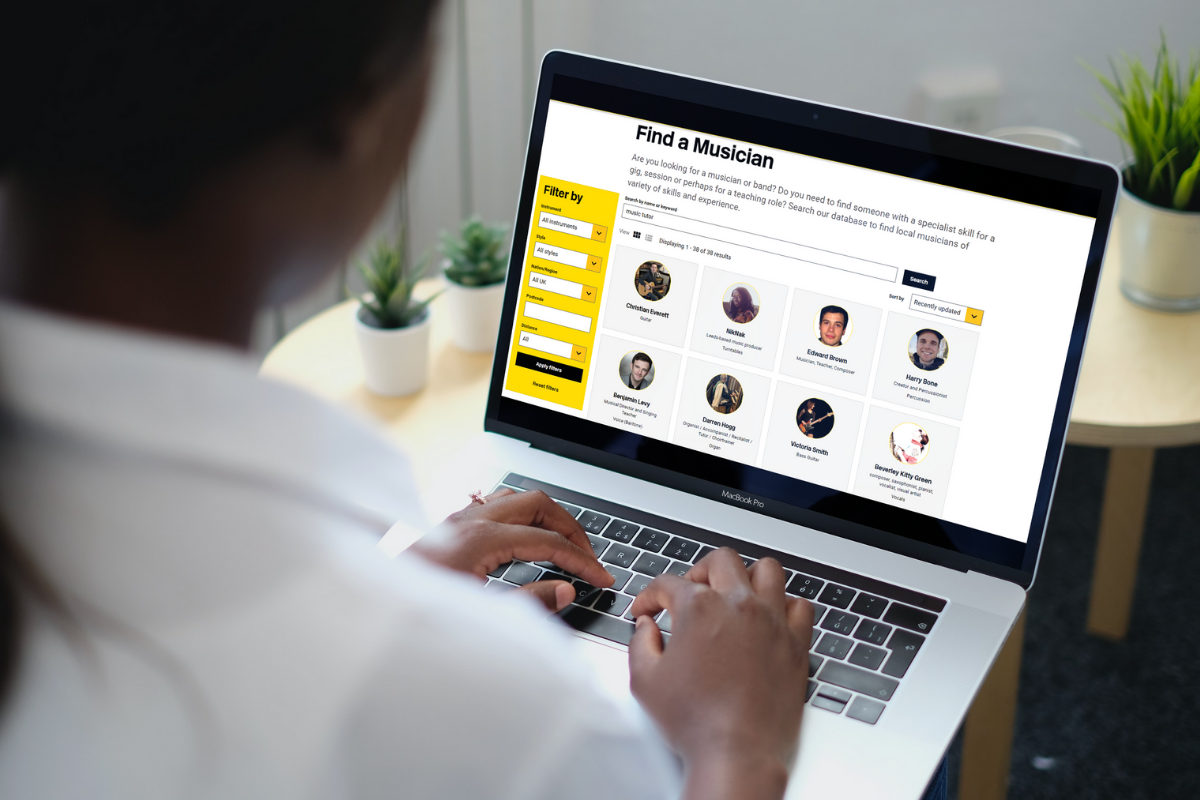In the last couple of years we've been improving our MU Member Directory to provide our members with a platform to showcase their work and find career opportunities.
As a musician who teaches, this platform can be a great tool to advertise your skills for potential students. Visitors of your online profile will be deciding if they want to share their experience of learning an instrument with you, so keeping your profile updated, relevant and discoverable is the key to using this resource to maximise your reach.
Here is some advice to get you started with your professional profile.
Look at other tutors' profiles
Search for other professionals similar to you, try different search criteria and observe which profiles grab your interest better at a glance. Check out some of the profiles - explore how other teachers introduce themselves, what they talk about in their bios and what else do they include to promote themselves. Think of what would work best for you and what wouldn’t.
Find other music teachers
Set your profile visibility
Your profile visibility will impact who can find you. You can customise the visibility of some of your information – either public, members only, or private. You might want to hide your location if your lessons are online. You can also keep your profile private in case you are not looking for new students or are not yet ready to advertise yourself.
Set your profile's visibility
 Research is crucial to get you started with your own online profile. Explore how the search function works, and how other teachers showcase their work.
Research is crucial to get you started with your own online profile. Explore how the search function works, and how other teachers showcase their work.
Give your first impression
There are a few bits of information that appear in the search results. This is your opportunity to grab the attention of the viewer and give your first impression. Make sure you add your profile photo, short description and indicate your main musical instrument and style. You also have an option to show your location if you prefer location-based contacts.
Choose your profile photo
Having a profile picture is key to your personal brand and online reach. It has an impact on your job opportunities and ultimately, your career.
Use a clear, professional photo: this should be a recent image, of your head and shoulders. Don't frame the photo too close or too far from the viewer - your face should take up about 60% of the image. Perhaps you can show yourself with the music instrument you play or reflect the music style you focus on.
Think about your background. Use contrasting colours as this will help your image to stand out. We recommend using a plain and simple background as busy backgrounds can take the focus off the main object - you.
Give an overview of you and your work
Here you have a freedom to describe yourself in your own words and really target your audience.
First things first, include the fact that you offer lessons here. Describe what you teach and who you teach. Note that your main instrument shows in the member directory search results so avoid listing your instruments in your short description.
Update your key details
Showcase your skills and experience
Now that you've got the interest and a visitor is looking at your full profile page, this is your chance to provide more details about yourself and your work, and describe the methods you apply when teaching. Show off your skills and experience, reflect your working style, your values.
Write your bio
Take some time to craft a short and engaging bio, which highlights your skill, certifications, exciting experiences, and shows off what your teaching style is. Include what genres you teach, your background, approach, and if you teach online.
Adjust your language to your target audience – for example, if you are targeting parents looking for a music teacher for their child, think about what parents would like to read.
Add your audio and video material
Linking your audio tracks and videos gives you the opportunity to show your skills in action and make future students feel connected to you. Use this space to show potential students how you teach - upload a short extract of a lesson, or student testimonials.
Connect your audio & video
Share your social media profiles
If you use social media platforms to promote and showcase your work, add your social media profile links. This can help demonstrate your portfolio, style and personality, as well as your community of fellow musicians and students.
Provide your contact details
Finally, don't forget to provide at least one way to contact you – this could be a phone number, email address, website, or work social media profiles. Think about sharing your general location if you offer face-to-face sessions.
Get advice on finding teaching work and getting paid
Read our guidance on finding work either as a private instrumental or vocal teacher, or through a third party such as a teaching agency. We also provide advice on recommended rates of pay, contracts, holiday pay, redundancy and other employment issues related to teaching.
Get advice